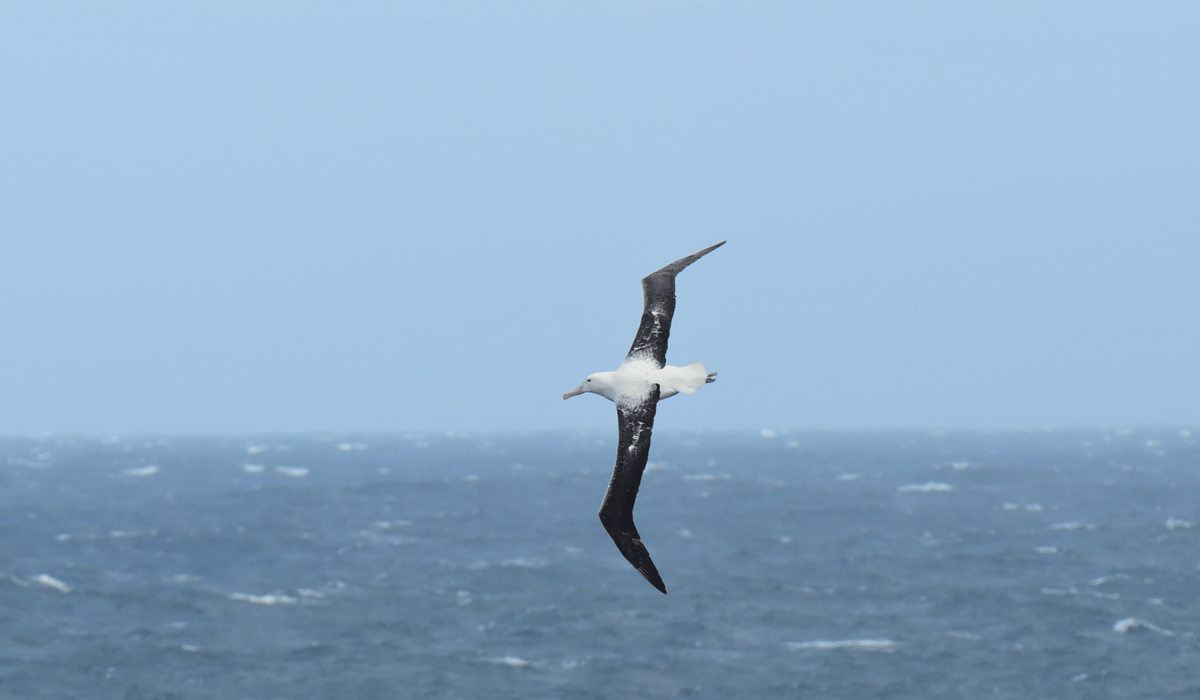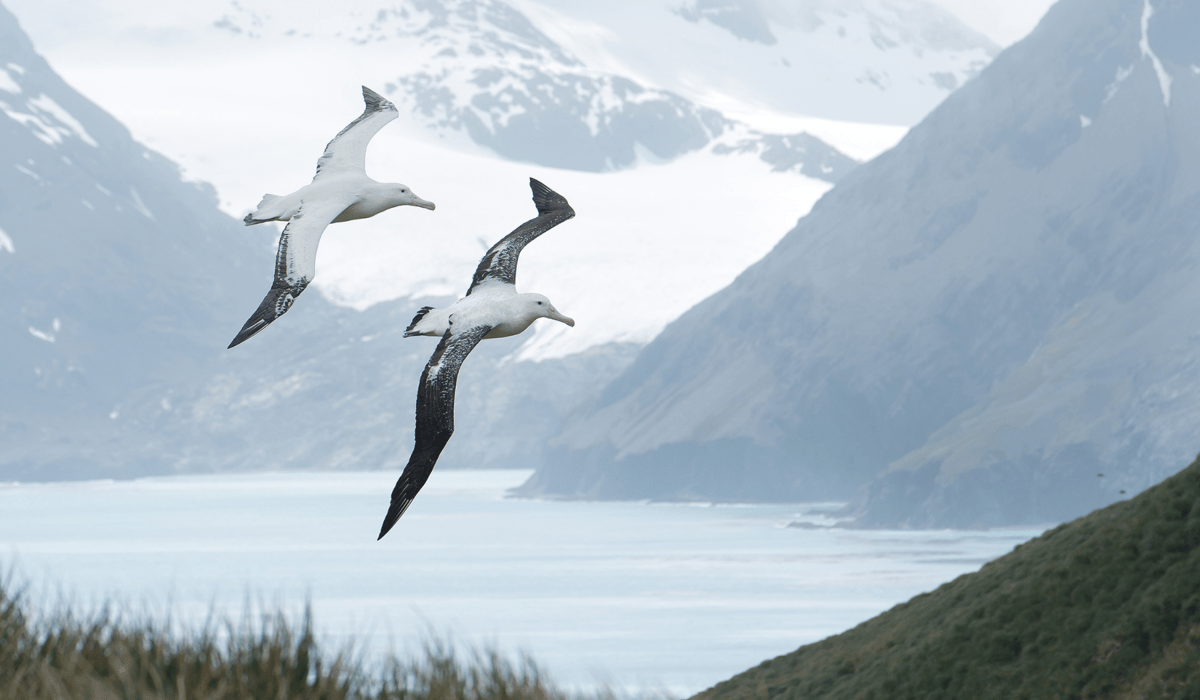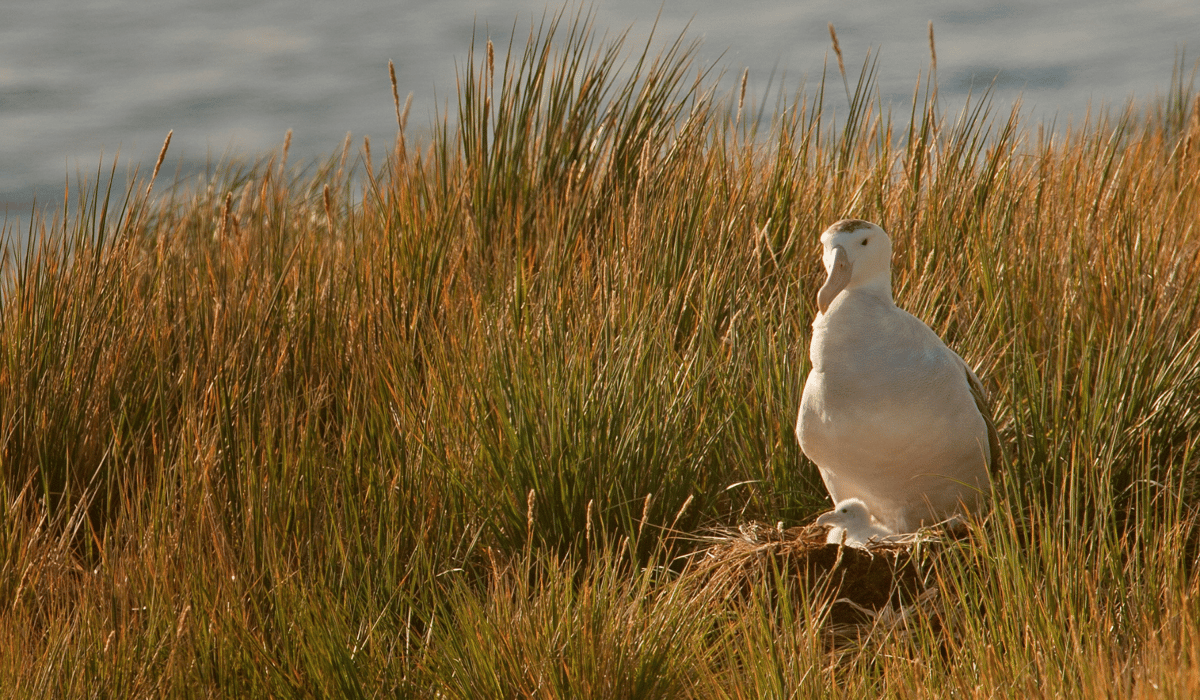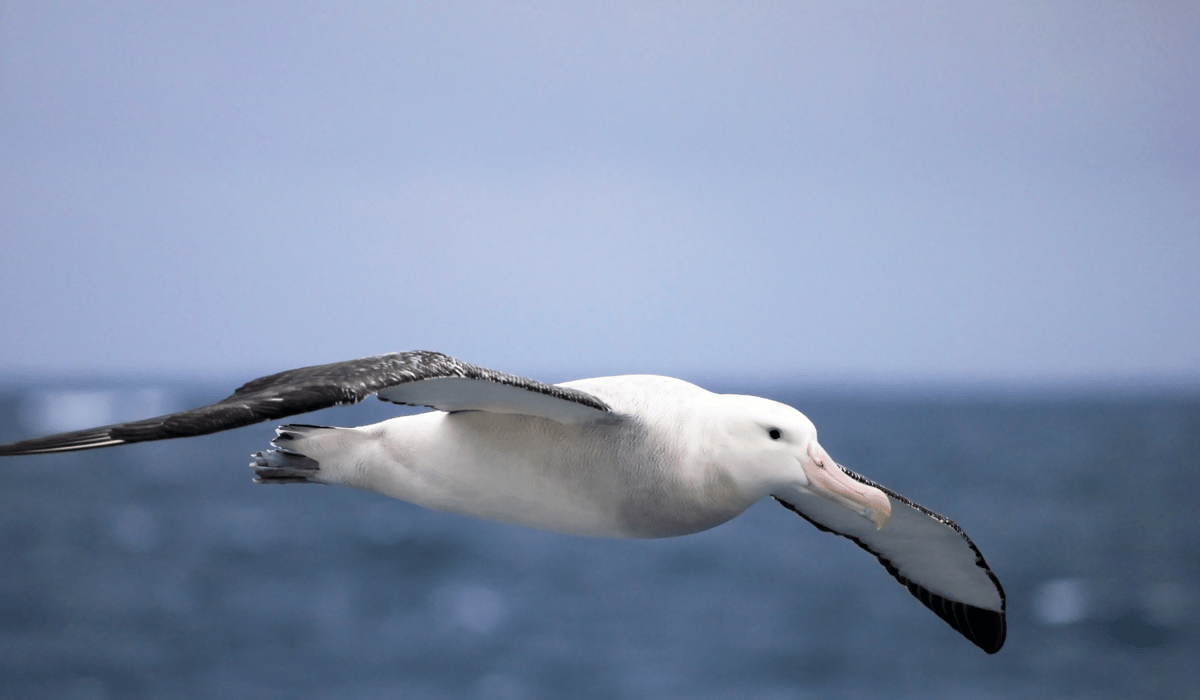The wandering albatross, with its majestic wingspan and graceful flight, is one of the most iconic seabirds in the world. Designated by the scientific name Diomedea exulans—after Diomedes, a Greek hero in mythology whose companions turned into birds, and the Latin for “exile”—they circumnavigate the South Ocean several times a year, and breed on islands such as South Georgia. These magnificent creatures are known for their long journeys over the open ocean, and their existence is filled with intriguing facts that make them truly remarkable.
1. Wingspan
The wandering albatross boasts the largest wingspans of any living bird, measuring up to an astonishing 11 feet. This immense wingspan allows them to glide effortlessly for hours or even days without flapping their wings. They do this by using their wings, almost like the sails of a ship, and zigzag in the wind to progress forward. Their method of flying is so efficient that they use less energy in the air than by sitting in a nest.

2. Long Flights
These seabirds are true marathon flyers. They travel up to 560 miles a day, at a speed of up to 25 miles an hour. One individual was recorded flying over 13,000 miles in just 46 days. This long-distance travel is essential for foraging and finding food over the vast expanses of the Southern Ocean. Most of their days are spent above the open water, while nights are spent sleeping on its surface.
3. Feeding Habits
The diet of the wandering albatross primarily consists of squid, fish, crustaceans, and other marine organisms. Unlike other seabirds, they can hunt at night, making shallow dives for fish. While the average wandering albatross weighs between 13 and 26 pounds, they can eat up to 6 pounds in a single feeding, or a quarter of their total mass! This can be an issue when they try to take off into the air after eating, often forcing them to vomit to lighten their weight or stay resting on the water while they digest.
4. Sense of Smell
The wandering albatross has an extraordinary sense of smell, with a large olfactory system and nasal passage. This allows it to detect prey from great distances, even over the vastness of the open ocean. They also have an organ called a salt gland that helps them rid their bodies of saline, essential as so much of their diet comes from the salty water of the ocean.
5. Monogamous Mates
Wandering albatrosses are known for forming strong, monogamous bonds. A pair will mate for life, breeding every couple of years. They often engage in intricate courtship dances involving synchronized movements and vocalizations, with the males spreading their wings, rapping their bills, and waving their heads around. The breeding season begins in November and lasts until July. Nests made out of mud and grass are where the female lays one egg, usually between December and January. Over the next several months, the parents take turns incubating the egg, and also share caring for the chick once it is born, with one going off hunting and the others staying to watch over the newborn.

6. Chicks
For the first 20 days of its life, the little wandering albatross chicks get fed daily by its parents, dining on meals such as regurgitated squid. Then their parents will leave the chick alone, returning around every 10 days with huge feasts. This is a time in which the offspring are vulnerable, and only about a third of chicks survive this period. For nearly nine months, the chick hangs out in its nest through the southern winter, entertaining itself while waiting for its parents to stop by with food. By the time the young albatross is ready to take flight, it is already as big, or even bigger, than its parents. When it finally glides away, it can expect to circle the globe several times before returning home to look for its own mate.

7. Lifespan
The wandering albatross can live up to 50 years. That’s remarkable when you consider that that accounts for around 5.2 million miles! As they age, their appearance changes. They turn whiter, with the black receding to the tips of their wings, just like those of us who find a few more white hairs each year that we grow older.
8. Humans and Albatrosses
The albatross was immortalized in English poet Samuel Taylor Coleridge’s The Rime of the Ancient Mariner, about a sailor who is cursed after shooting an albatross who was thought to be a good omen to the rest of the crew. This is the origin of the expression of having an albatross around one’s neck, which describes an unwanted burden. Coleridge was likely inspired by sailors, who described how albatrosses accompanied ships throughout their journeys. They also had the unfortunate habit of capturing them to use their long wing bones for tobacco pipes.
9. Vulnerable Status
Despite their adaptability and remarkable abilities, wandering albatrosses face several threats. Despite having no natural predators, they will eat almost anything, which includes garbage from ships. Longline fishing and plastic pollution are significant concerns, as they can entangle these birds or be ingested, leading to injury or death. Climate change and habitat degradation in their breeding colonies also pose threats. Because they lay only one egg every two years, they are particularly vulnerable to any environmental disturbances.
Currently, their estimated population is just over 20,000, which has declined more than 50% over the past few generations. This lists them as a vulnerable species.
Efforts are underway to protect and conserve wandering albatross populations. Conservation organizations and governments are working to reduce bycatch in fishing operations, raise awareness about plastic pollution, and establish protected marine areas to safeguard their habitats.

10. Spotting Wandering Albatrosses
Wandering albatrosses are primarily found in the Southern Ocean, circling Antarctica. They are known for their ability to cover immense distances and are rarely seen near land, except during the breeding season. Breeding takes place on sub-Antarctic islands, including South Georgia. This is where more than 10% of the world’s population of wandering albatrosses comes to breed in early November. Your best chance to see a wandering albatross is on a cruise in the South Atlantic, including South Georgia. Pack your binoculars and a camera to get a glimpse of this majestic creature!
The wandering albatross is a bird that captures the imagination with its astounding wingspan, epic journeys, and unique way of life. Its remarkable adaptations to life at sea and its vital role in ocean ecosystems make it an essential and captivating species to study and protect. Learn more about this magnificent bird as you prepare for your polar expedition, and gain a deeper appreciation for the beauty and complexity of the natural world it calls home.





